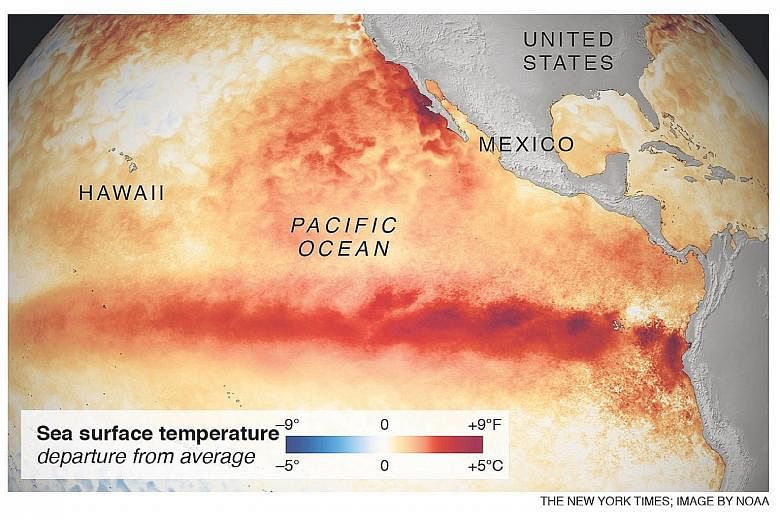MIAMI • Melting ice in West Antarctica is a major concern for global sea levels, and scientists say a key area may already be unstable enough to unleash 3m of ocean rise.
A research carried out last year, led by Nasa glaciologist Eric Rignot, warned that ice in the Antarctic had gone into a state of irreversible retreat, that the melting was considered "unstoppable" and could raise sea levels by 1.2 metres.
Now, researchers at Germany's Potsdam Institute for Climate Impact Research pointed to the long-term impacts of the crucial Amundsen Sea sector of West Antarctica, which they said "has most likely been destabilised".
While previous studies "examined the short-term future evolution of this region, here we take the next step and simulate the long-term evolution of the whole West Antarctic Ice Sheet," the authors said in the Proceedings of the National Academy of Sciences (PNAS) on Monday.
They used computer models to project the effects of 60 more years of melting at the current rate. This "would drive the West Antarctic Ice Sheet past a critical threshold beyond which a complete, long-term disintegration would occur". In other words, "the entire marine ice sheet will discharge into the ocean, causing a global sea-level rise of about 3m," they wrote.
"If the destabilisation has begun, a 3m increase in sea levels over the next several centuries to millennia may be unavoidable."
The authors said Antarctica's situation presents the largest uncertainty in sea-level projections for the coming centuries. Just days before the PNAS study was released, another scientific paper used Nasa satellite data from 2003 to 2008 to show that Antarctic ice gained mass, enough to exceed the amount lost in other areas.
"We're essentially in agreement with other studies that show an increase in ice discharge in the Antarctic Peninsula and the Thwaites and Pine Island region of West Antarctica," said Dr Jay Zwally, glaciologist with Nasa, whose study was published on Oct 30 in the Journal of Glaciology. "Our main disagreement is for East Antarctica and the interior of West Antarctica - there, we see an ice gain that exceeds the losses in the other areas."
According to climatologist Michael Mann, the use of older satellite data means the claims cannot address the finding that Antarctic ice loss has accelerated in more recent years.
AGENCE FRANCE-PRESSE

